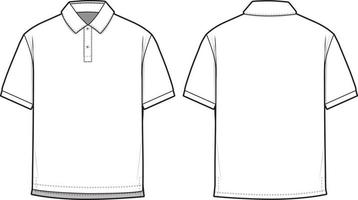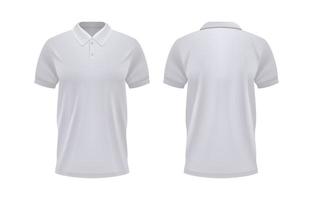Polo shirts – they’re the unsung heroes of many wardrobes, effortlessly bridging the gap between casual comfort and smart professionalism. From corporate uniforms and sports teams to stylish everyday wear and promotional merchandise, the polo shirt holds a unique and versatile place. But what happens when you have a brilliant idea for a custom polo shirt, perhaps for your new business, a family reunion, or a local club, and you need to visualize it before committing to production? This is where the magic of free polo shirt design template images comes into play.
Designing a custom garment can seem daunting. You might have a logo, a color scheme, or a specific vision, but translating that into a realistic visual can be a challenge. Hiring a professional designer for every concept iteration can be costly and time-consuming. Fortunately, the internet is a treasure trove of resources, offering a vast array of free design templates that allow you to bring your ideas to life with ease. This article will guide you through the exciting world of free polo shirt design templates, explaining why they are indispensable, where to find the best ones, what to look for, and how to use them effectively to turn your design dreams into a tangible reality.
Why Use Free Polo Shirt Design Templates?
The benefits of utilizing free design templates extend far beyond simply saving money. They are powerful tools that streamline the design process, foster creativity, and ensure a professional outcome.
Saves Time and Effort
Imagine starting every design from a blank canvas. It requires precise measurements, understanding fabric drapes, and meticulous detailing to create a realistic representation. Free templates eliminate this groundwork. They come pre-formatted with accurate shirt shapes, folds, and shadows, allowing you to jump straight to the creative part: placing your logo, choosing colors, and adding text. This significantly cuts down on design time, letting you iterate on ideas much faster and bring your concepts to life without getting bogged down in the technicalities of drawing a garment from scratch.
Sparks Creativity
Even the most seasoned designers sometimes face creative blocks. Browsing through a collection of diverse templates can be an incredible source of inspiration. You might encounter a unique collar style, a clever sleeve detail, or an unexpected color combination that you hadn't considered. Templates expose you to different design possibilities, helping you think outside the box and refine your vision. They can provide a fresh perspective and nudge you towards innovative ideas you might not have discovered otherwise, making the design process more enjoyable and fruitful.
Cost-Effective Solution
For individuals, small businesses, startups, or non-profit organizations, budget is often a primary concern. Investing in expensive design software or hiring a graphic designer for initial mockups might not always be feasible. Free templates provide a zero-cost entry point into professional-looking design visualization. This allows you to test multiple concepts without financial commitment, ensuring you're happy with the design before spending on actual production. It democratizes the design process, making high-quality visualization accessible to everyone, regardless of their budget.
Ensures Professionalism
Most free templates are created by professional graphic designers, meaning they adhere to good design principles. They feature realistic textures, proper lighting, and accurate proportions, making your mockups look polished and credible. Presenting a high-quality visual concept to clients, team members, or manufacturers can make a huge difference in conveying your ideas clearly and effectively, giving your project a professional edge from the outset. A well-presented mockup instills confidence and helps everyone involved understand the final product more accurately.
Where to Find High-Quality Free Polo Shirt Design Template Images
The internet is brimming with resources for free design assets. Knowing where to look for the best polo shirt templates can save you a lot of searching time. Here are some of the most reliable sources:
Dedicated Mockup Websites
Many websites specialize in offering free mockups for various products, including apparel. Sites like FreePik, GraphicBurger, and MockupWorld often have extensive collections. When exploring these sites, look for templates that are offered as Photoshop (.PSD) files, as these typically provide the most flexibility for customization. Pay attention to user ratings and download counts, which can indicate the quality and popularity of a template. These platforms are often curated, making it easier to find high-quality, ready-to-use files.
Stock Photo and Vector Sites (with Free Sections)
While not exclusively for mockups, platforms like Vecteezy and sometimes even Freepik (beyond their dedicated mockup section) offer free vector templates in formats like AI (Adobe Illustrator) or EPS. These are excellent if you prefer working with vector graphics for scalable designs that won't lose quality when resized. For a more photo-realistic base, sites like Unsplash or Pexels might offer high-resolution images of blank polo shirts that you can then overlay your designs onto using image editing software, providing a unique starting point for your custom creations.
Design Community Forums and Blogs
The design community is incredibly generous. Many design blogs regularly curate lists of the best free mockups available online, often with detailed reviews and usage tips. Websites like Behance and Dribbble, while primarily portfolio sites, often have designers who share freebies as part of their projects to showcase their skills and contribute to the community. Joining relevant design forums or following popular design blogs can keep you updated on new free resources as they become available, often providing insights into how other designers are using these tools.
Software-Specific Resources
If you use specific design software, check their integrated or community resources. For example, Adobe Stock has a free section that occasionally includes apparel mockups that can be seamlessly integrated into your Adobe workflow. Canva, a popular online design tool known for its user-friendliness, also offers a range of free templates, though their customization options might be more limited compared to a layered PSD file. These built-in resources can be a convenient starting point if you're already familiar with a particular design ecosystem.
What to Look for in a Great Polo Shirt Design Template
Not all free templates are created equal. To ensure you get the most out of your download, keep an eye out for these key features:
High Resolution and Quality
A low-resolution template will result in pixelated or blurry mockups, which defeats the purpose of professional presentation. Always opt for templates that offer high resolution (e.g., 300 DPI for print-ready quality, or at least 1500-2000 pixels wide for web use). This ensures your design looks crisp and clear, whether viewed on screen or printed, providing a professional and polished appearance that accurately represents your final product.
Multiple Views and Angles
A comprehensive template package will include various views of the polo shirt – front, back, side, and perhaps even close-ups of the collar, sleeves, or buttons. This allows you to present a complete picture of your design, showing how it looks from all perspectives and highlighting specific details. Multiple angles are crucial for a thorough visualization, helping you and your audience understand every aspect of the design before production.
Easy Customization (Layered Files)
The best templates are typically layered Photoshop (.PSD) files that utilize "smart objects." Smart objects are placeholders where you can easily drop your own design, and it will automatically adapt to the shirt's contours and perspective. Look for templates that allow you to change the shirt color, background, and other elements with minimal effort. This level of customization ensures flexibility and allows you to experiment with different design variations quickly and efficiently.
Realistic Presentation
A good template should make your design look like it’s actually printed on a real polo shirt. This means realistic shadows, fabric textures (like pique knit), and natural drapes. The more lifelike the mockup, the better it will convey your final product vision, helping you and your clients truly visualize the end result. A realistic presentation adds credibility and helps in making informed decisions about the design.
Licensing Information
This is crucial, especially if you plan to use the mockup for commercial purposes. Always check the licensing terms. Many free templates are offered for both personal and commercial use, but some might have restrictions (e.g., attribution required, no redistribution). Ensure the license aligns with your intended use to avoid any legal complications down the line. It's always better to be safe than sorry when it comes to intellectual property.
How to Effectively Use Your Chosen Template
Once you’ve found the perfect template, putting it to use is the next exciting step. Here’s a general guide:
Software Requirements
For most high-quality, layered templates (especially PSD files), you’ll need image editing software. Adobe Photoshop is the industry standard, but free alternatives like GIMP or online tools like Photopea offer similar functionalities for opening and editing PSD files, making professional design accessible without a hefty software investment. For vector templates (AI, EPS), Adobe Illustrator or free alternatives like Inkscape are necessary to manipulate the scalable graphics effectively.
Step-by-Step Customization (General Process)
- Open the Template: Launch your chosen software and open the downloaded template file.
- Locate Smart Objects: In Photoshop, look for layers marked with a small icon (often a square with a page symbol) – these are smart objects. Double-click on them to open a new editable window.
- Place Your Design: A new window will open. Paste your logo, artwork, or text into this window. Resize and position it as desired to fit the designated area.
- Save and Close Smart Object: Save the smart object (Ctrl+S or Cmd+S) and then close its window. Your design will magically appear on the polo shirt in the main template, perfectly warped and shadowed to fit the garment's contours.
- Customize Colors and Background: Use adjustment layers or specific color layers within the template to change the polo shirt’s color, background, and other elements to match your brand or vision.
- Export Your Mockup: Once satisfied, save your work as a new file (e.g., JPEG or PNG) for sharing or presentation, ensuring it's in a format suitable for your needs.
Tips for Best Results
- Experiment with Colors: Don't be afraid to try multiple color combinations for the shirt and your design. Different palettes can evoke different feelings and appeal to various audiences.
- Consider Branding: Ensure your design adheres to your brand guidelines, including fonts, colors, and logo usage. Consistency is key for a strong brand identity.
- Get Feedback: Share your mockups with colleagues, friends, or potential customers to gather valuable feedback before finalizing. An outside perspective can catch details you might have missed.
- Think About Production: While designing, keep the actual production method in mind (e.g., embroidery has limitations on fine detail, screen printing requires specific color separations). This helps create a design that is both visually appealing and practical to produce.
Beyond the Template: Bringing Your Design to Life
While templates are fantastic for visualization, a successful polo shirt design also considers practical aspects of production and wear, ensuring your final product is both beautiful and functional.
Understanding Fabric and Fit
Polo shirts come in various fabrics like pique (classic textured look), jersey (smoother, t-shirt like), and performance blends (moisture-wicking). Consider how your design will look on these different textures and how the fabric choice aligns with the shirt's purpose. Also, think about the fit – classic, slim, or athletic – as this affects the overall aesthetic and target audience. The right fabric and fit can elevate your design significantly.
Logo Placement and Sizing
Standard logo placements include the left chest (most common), right chest, sleeve, back yoke, or across the back. Research standard sizing for embroidery or screen printing in these areas to ensure your design is proportionate and impactful without being overwhelming. Proper placement and sizing are crucial for brand visibility and aesthetic balance, making sure your logo stands out for all the right reasons.
Color Psychology and Branding
Colors evoke emotions and convey messages. Choose colors that




